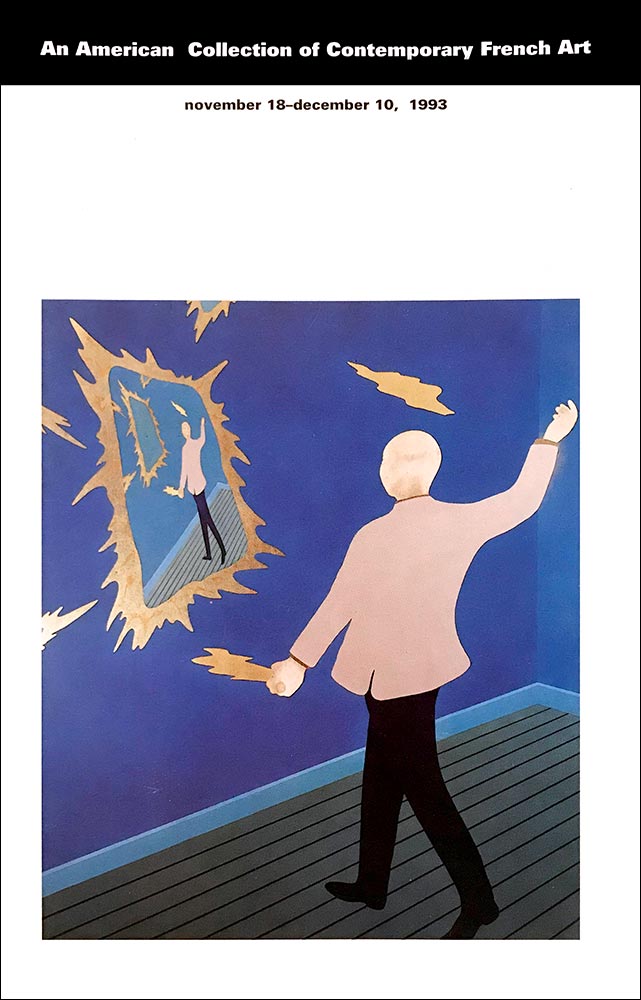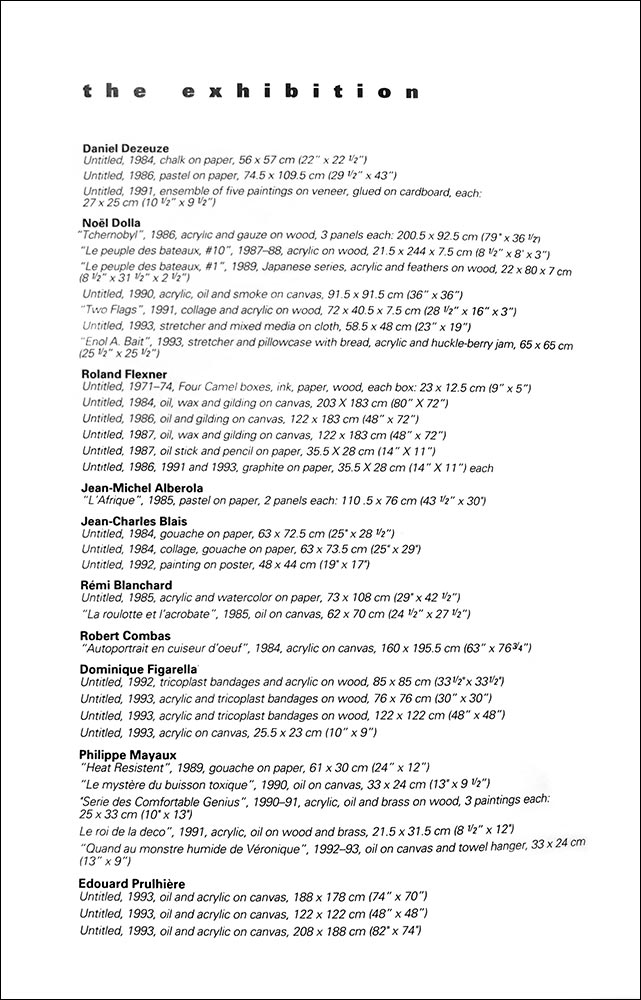Presented by French Cultural Services in New York
November 18 – December 10, 1993
Reviewing The Collection
Despite or perhaps because of its daunting history, contemporary French art remains a rather shadowy entity for most American art audiences. An emphasis on the “triumph” of American art in the latter half of the 20th century has obscured various parallel histories and developments outside the United States.
Continue > Reviewing The Collection by Eleanor Heartney
A Word From The Collector
Some years ago, traveling in the South of France, I stayed at “La Colombe d’Or” in Saint-Paul de Vence. Madame Roux welcomed me to my room. Spread across the walls, grouped here and there into stylistic clusters, was French contemporary art of the 1930’s, 40’s, and 50’s. The swimming pool had a Braque mosaic and was flanked by a Calder mobile. Thus began my first experience of living with French art.
“The Cote d’Azur is a beautiful place,” said Matisse, and “Nice is a place of work and joy.” Matisse, Picasso, Bonnard, Leger, Chagall, each one has his own museum in Nice or its vicinity. A friendship with Roland Flexner, and our lengthy discussions and visits to Nice, advanced my awareness of contemporary French art. I enjoyed the relationship with the artists there, and found a challenge in their way of thinking.
My excitement rose in 1986 when visiting Noel Dolla who was working on his Chernobyl triptych. Daniel Dezeuze was then showing new works on paper which I found intriguing and drew my attention to this remarkable artist. Later it was a pleasure to watch Roland Flexner work with technical mastery on paintings of mourners.
On subsequent trips to France, I discovered the figurative paintings which made their mark on the 80’s. Combas, Blais, Blanchard, Alberola, were all part of the group which began “La figuration libre” in 1981 with the show “Finir en beaute.”
Neo-expressionism was present in the work of Blanchard and also of Alberola who returned to more historically oriented painting. Comfort and familiarity found expression in a more abstract mode with Blais. Combas has been compared to the American artist Keith Haring, and by me to R. Crumb but his wit remains specifically French.
A collection must move forward and as the 90’s began, new artists emerged. The latest acquisitions are the challenging new paintings of Edouard Prulhiere, Dominique Figarella, and Philippe Mayaux. I hope the public will share my enthusiasm.
The endless patience of French dealers helped to build my confidence in collecting French art. Yvon Lambert spent hours with me referencing works. Erik Venard helped me interpret the artist’s message, as did Daniel Templon.
Christine Le Chanjour rolled canvas after canvas of Combas on the floor for my eyes to feast upon. As if they were her children, she did not want to part with them. She and Catherine Issert were more than pleased to show me their personal collections.
I would like to thank the following people who helped in many ways to give new meaning to the art I love: Pierre Chaigneau, Stephane Correard, Daniel Dezeuze, Noel Dolla, Elizabeth Fiore, Roland Flexner, Claude Fournet, Jean Fremont, Alain Kirili, Didier Marty-Troubadour, Elisabeth Mercier, Tom & Magrit Newman, Bernard Pages, Jean-Marc Reol, Bernard Lamarche-Vadel, Ella Venet, and Makhi Xenakis. A special thanks to Joseph F. Lovett who co-owns the works in this exhibit and has been a sounding board for my enthusiasm.
Finally, my personal thanks to Alice Zimet and The Chase Manhattan Bank for bringing this project to the attention of the French Cultural Services in New York, and for making the exhibition possible.
—James E. Cottrell

